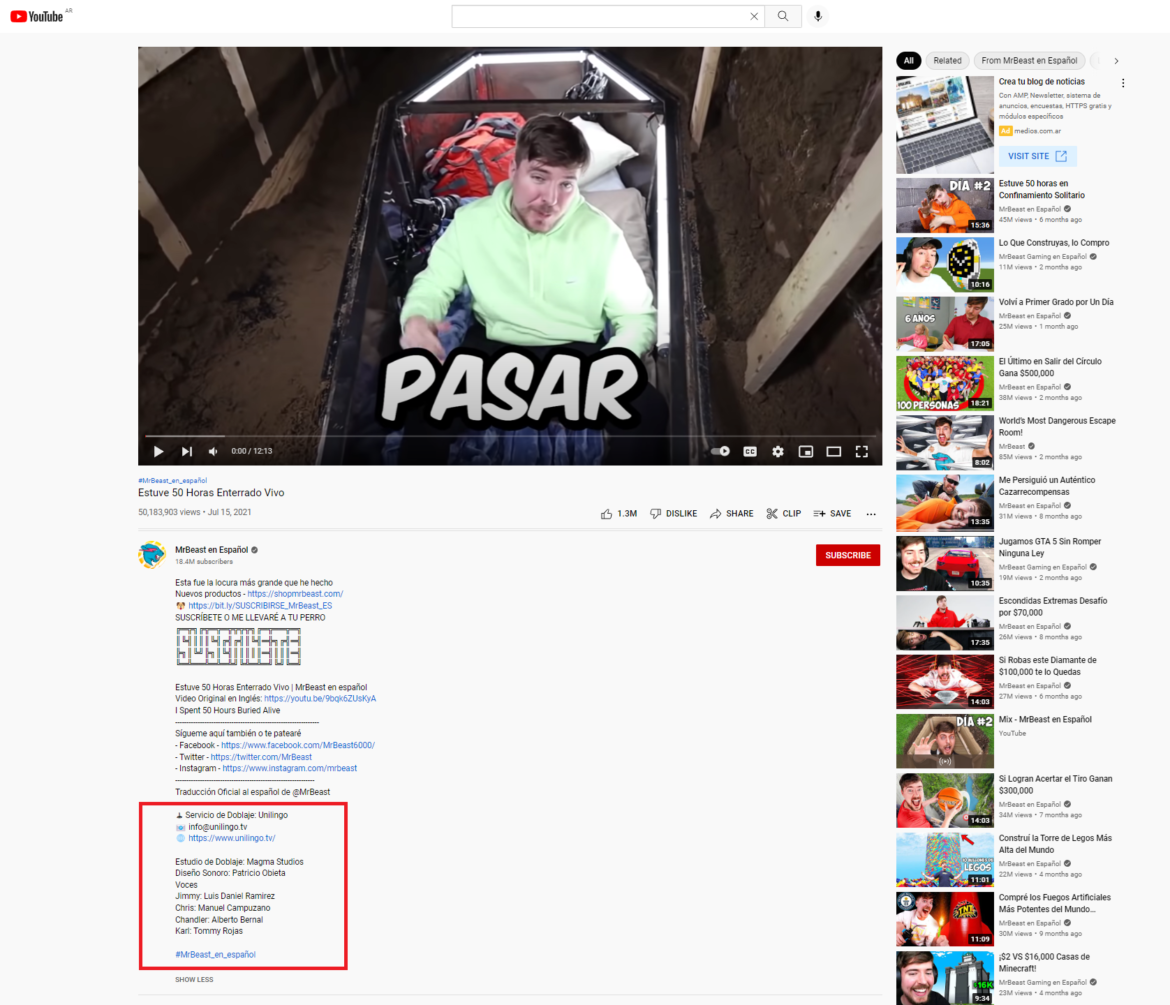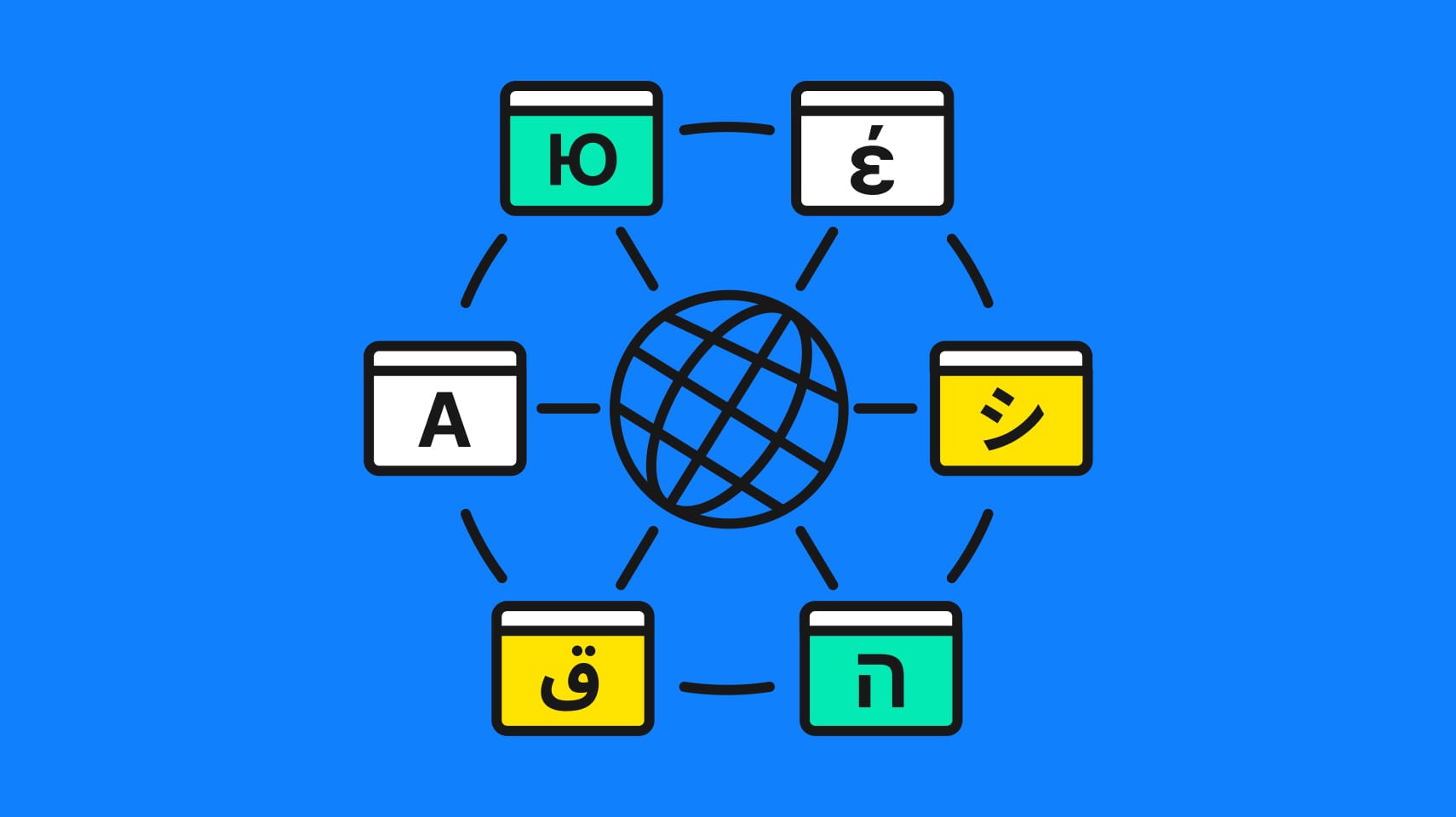Global business
How to Reach a Global Audience: 7 Key Lessons from MrBeast

Imagine what it’d be like if your content reached hundreds of millions of people around the globe every month—and your message was being seen and heard by people in every corner of the world, understanding you in their own language.
For many brands, these are pipe-dream scenarios, but for Jimmy Donaldson, MrBeast, that’s just another month at work. The world-famous YouTuber has amassed a following of 100M+ subscribers by producing videos with a strategic focus on local relevance.
Let’s have a closer look at MrBeast’s exceptional localization example and draw key lessons for tailoring content that resonates with people across cultures and languages—and how brands can leverage localization to expand the global footprint of their business.
Who is MrBeast? A quick rundown
The young YouTuber’s name from the US is Jimmy Donaldson. Born in 1998, MrBeast began creating content on YouTube in 2012, with the intention of simply making videos that he thought were funny.
While his early content was admittedly not the most polished, his unique sense of humor and willingness to try just about anything (like reading every word in the dictionary) quickly won him a loyal following.
In 2017, MrBeast’s account blew up after he released a video called “Counting to 100,000.” The 55-hour-long livestream raised over $100K for various charities and propelled him to internet stardom.
In the years since, MrBeast has become known for his expensive stunts and challenges. He’s given away tens of thousands of dollars to strangers, raised millions of dollars for charity, and started a project to plant 20M trees.
In 2019, MrBeast won the Breakout Creator award by Streamy Awards, and this achievement was followed by the YouTuber of the Year award at the 12th Annual Shorty Awards in 2020.
Cast the widest net, catch the most fish
In 2021, it was estimated that MrBeast was worth approx. $54M. At first sight, MrBeast’s videos may seem like they’re all in good fun, but a large part of his success can be attributed to a global expansion strategy that relies heavily on localization.
Dive deeper
What is localization, and why does it matter?
Find out why localization isn’t the same as translation and how it can support companies in expanding the global footprint of their business.
Jimmy understands that YouTube is a global platform with users from all corners of the world. While his early videos were popular with English-speaking audiences, he realized that if he wanted to get international views on YouTube, he would need to start producing content that was localized for international audiences.
That’s why he went on to diversify his content and dub it into different languages. His localization efforts started paying off quickly: In the first half of 2022, his localized channel views added up to more than 160M.
Localization doesn’t simply mean translating the words in your videos—it’s about understanding the nuances of different cultures and how to appeal to them.
A localization effort that has paid off
MrBeast approached localization through dubbing. He created separate channels for Spanish, Russian, Portuguese, and French content, and hired native speakers to provide voice-overs for his videos. If you’re wondering how many channels MrBeast has, here’s a non-exhaustive list…
MrBeast’s YouTube channels in English:
MrBeast’s international YouTube channels:
- MrBeast en español (Spanish)
- Beast Reacts en español (Spanish)
- MrBeast На Русском (Russian)
- MrBeast Brasil (Brazilian Portuguese)
- MrBeast Gaming en español (Spanish)
- MrBeast en Français (French)
- MrBeast Gaming Brasil (Brazilian Portuguese)
By completely replacing the original speaker’s voice with that of a native speaker and taking great care of aspects such as lip synchronization, intonation, and the interpretation of different emotions, MrBeast was able to produce videos that felt natural and authentic to local audiences in different countries.
What brands can learn about reaching a global audience from MrBeast
You don’t need to contact MrBeast to realize that localization is a powerful tool for expanding your reach to foreign markets and driving global revenue. His empire has exponentially grown thanks to his ability to connect with international audiences on a local level.
When you create content that is relevant to your target audience, you build an emotional connection with them that goes beyond language barriers. You create a bond that can lead to lifelong customers and fans. The great thing about localization is that you don’t need to start from scratch in every market—you can adapt your existing content to fit the needs of different cultures.
How to customize content for a global audience
Now that we’ve seen why localization is important, let’s take a look at how you can start incorporating it into your global content strategy.
Establish clear goals
The first step is to establish what you want to achieve with content localization. Do you want to increase brand awareness in new markets, drive traffic to your website or online store, or boost sales in a specific market? One of MrBeast’s goals, for example, is increased exposure, which can be measured by video views across various languages.
Identify your target audience
Once you know what your goals are, you need to identify your target audience: Are you targeting a specific country or region? What age groups are you targeting? Are they primarily male or female? What language do they speak?
In the case of MrBeast, the primary target audience is likely under-25-years-olds who speak either English, Spanish, Russian, Portuguese, or French.
Research your target audience
It’s time to start uncovering what makes your target market tick. What type of content do they consume? How do they like to consume it (e.g., text, video, audio)? What do they care about? What drives their purchasing decisions?
MrBeast’s research likely told him that his target audience enjoys watching extravagant videos, often involving challenges and dares, and philanthropic content.
Set up the right processes, tools, and partners
Now that you know your goals and target audience, you need to set up the process and tools to make localization happen. This includes things like choosing the right localization and technology partners, setting up workflows, and establishing quality standards.
MrBeast, for example, enlisted dubbing, subtitling, and closed captioning services of a video translation management platform that relies on artificial intelligence to select the best videos for translation for each target market.

Create localized content
Now that you know what type of content your target audience wants, it’s time to start creating it. If you already have existing content, see if there’s a way to adapt it for your target market. If not, start from scratch.
MrBeast carefully selected the videos he thought would perform well in each market and had them dubbed accordingly.
Avoid common localization pitfalls
There are quite a few localization mistakes that brands make when adapting content for local markets. Some of the most common ones include skipping market research, not using the right localization technology, not relying on professional localization services, not being sensitive to cultural differences, underestimating quality control, and more.
A quick peek into the comment section of MrBeast’s videos from his international channels shows that he was able to avoid these pitfalls. The comments are filled with people from all over the world praising him for the outstanding quality of his localized content.
Measure your results
Last but not least, you need to measure the results of your localization efforts. Key metrics to monitor include video views, website traffic, engagement rates, conversion rates, and sales. This is the only way to ensure a strong localization ROI in the long run.
MrBeast regularly shares LinkedIn updates about his international video views and how his localized content is driving significant global growth for his channel.
Befriend localization to reach a global audience
Whether you’re a small business or a large enterprise, if you want to succeed in the global marketplace, you need to start thinking local. Localization will help you build trust and connect with foreign audiences on a deeper level, both of which are essential for driving revenue and achieving long-term success. If you aren’t convinced yet—just ask MrBeast.
Speak with an expert
Want to learn how our solutions can help you unlock global opportunity? We’d be happy to show you around the Phrase Localization Suite and answer any questions you may have.
Last updated on September 26, 2023.





